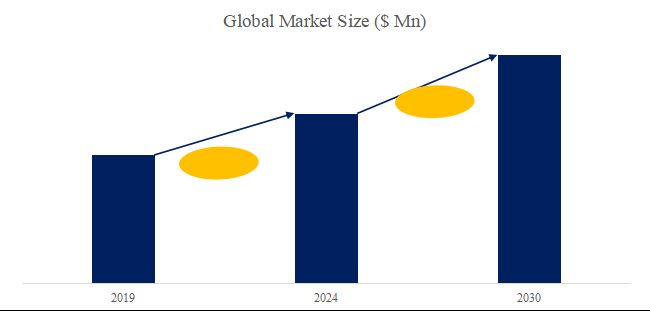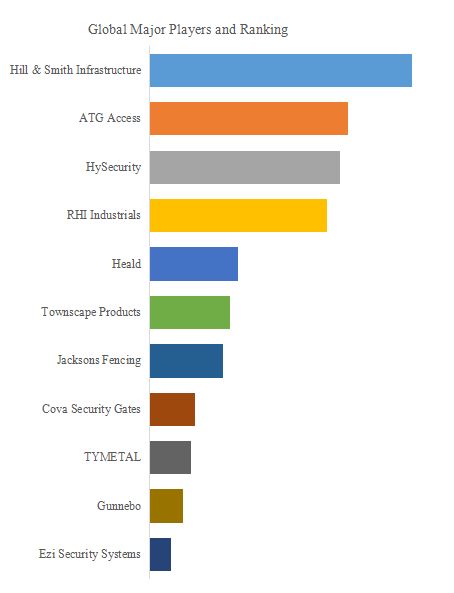Hostile Vehicle Mitigation Device Industry Research: the global market size is projected to reach USD 0.37 billion by 2030
Hostile Vehicle Mitigation (HVM) devices are security systems designed to prevent or mitigate the effects of vehicleborne attacks, such as ramming incidents where a vehicle is used as a weapon to target pedestrians, buildings, or other vehicles. These devices are becoming increasingly important in urban security strategies.
Market Growth: The market for HVM devices has been growing due to heightened security concerns in urban areas, public events, and critical infrastructure protection. Incidents of vehicle attacks have increased the demand for such security measures.
Government Initiatives: Many governments around the world are investing in security infrastructure, which includes the deployment of HVM devices. These initiatives are driving market growth.
Product Diversification: The market offers a variety of HVM solutions, including bollards, barriers, gates, and automatic retractable systems. The diversity of products allows for tailored solutions to different security needs and environments.
According to the new market research report “Hostile Vehicle Mitigation Device- Global Market Share and Ranking, Overall Sales and Demand Forecast 2024-2030”, published by QYResearch, the global Hostile Vehicle Mitigation Device market size is projected to reach USD 0.37 billion by 2030, at a CAGR of 5.1% during the forecast period.
- Global Hostile Vehicle Mitigation Device MarketSize(US$ Million), 2019-2030

Source: QYResearch, "Hostile Vehicle Mitigation Device- Global Market Share and Ranking, Overall Sales and Demand Forecast 2024-2030”
- Global Hostile Vehicle Mitigation Device Top11Players Ranking and Market Share (Ranking is based on the revenue of 2023, continually updated)

Source: QYResearch, "Hostile Vehicle Mitigation Device- Global Market Share and Ranking, Overall Sales and Demand Forecast 2024-2030”
According to QYResearch Top Players Research Center, the global key manufacturers of Hostile Vehicle Mitigation Device include Hill & Smith Infrastructure, ATG Access, HySecurity, RHI Industrials, Heald, Townscape Products, Jacksons Fencing, Cova Security Gates, TYMETAL, Gunnebo, etc. In 2023, the global top 10 players had a share approximately 56.0% in terms of revenue.
Market Trends
Advanced Technology Integration: HVM devices are increasingly integrating advanced technologies such as biometrics, surveillance cameras, and sensors. These technologies enhance the capabilities of HVM systems by providing real-time monitoring and rapid response options.
Smart HVM Systems: The integration of IoT and AI is leading to the development of smart HVM systems that can automatically detect and respond to potential threats. These systems can alert security personnel and even deploy countermeasures without human intervention.
Mobile HVM Solutions: There is a growing demand for mobile HVM devices that can be quickly deployed and moved to various locations as needed. These solutions are particularly useful for events that require temporary security measures.
Enhanced Aesthetics: As HVM devices are often installed in public spaces, there is a trend towards designing systems that are both secure and aesthetically pleasing. This includes the use of transparent or architecturally integrated barriers.
Regulatory Compliance: As security standards evolve, HVM devices must comply with new regulations. This is driving innovation in the industry as companies work to meet these requirements.
Public-Private Partnerships: The deployment of HVM devices often involves collaboration between government agencies and private companies. These partnerships can facilitate the rapid implementation of security measures.
Focus onSoft Solutions: Alongside physical barriers, there is a growing interest in "soft" security solutions that do not impede public access or aesthetics. These include vehicle-activated warning systems, predictive analytics, and public awareness campaigns.
Sustainability: There is a trend towards developing HVM devices that are environmentally friendly, such as using sustainable materials and designs that minimize the impact on the environment.
Global Expansion: As security concerns are not limited to any one region, the market for HVM devices is experiencing global expansion, with increasing demand in both developed and developing countries.
Training and Maintenance: There is a growing recognition of the importance of proper training for security personnel to effectively use HVM devices, as well as the need for regular maintenance to ensure their reliability.
Overall, the HVM device market is expected to continue as security remains a top priority for governments and private organizations. The trend towards more integrated, intelligent, and versatile security solutions will likely shape the industry's future.
About The Authors
|
|
Bin Song - The main analyst of this article |
|
Email: SongBin@qyresearch.com
|
|
|
Mr. Song has 10 years of industry research experience, focusing on the research of electronics and semiconductors and other related fields, including semiconductor equipment and components, semiconductor materials, consumer electronics, new materials, etc. |
About QYResearch
QYResearch founded in California, USA in 2007.It is a leading global market research and consulting company. With over 17 years’ experience and professional research team in various cities over the world QY Research focuses on management consulting, database and seminar services, IPO consulting (data is widely cited in prospectuses, annual reports and presentations), industry chain research and customized research to help our clients in providing non-linear revenue model and make them successful. We are globally recognized for our expansive portfolio of services, good corporate citizenship, and our strong commitment to sustainability. Up to now, we have cooperated with more than 60,000 clients across five continents. Let’s work closely with you and build a bold and better future.
QYResearch is a world-renowned large-scale consulting company. The industry covers various high-tech industry chain market segments, spanning the semiconductor industry chain (semiconductor equipment and parts, semiconductor materials, ICs, Foundry, packaging and testing, discrete devices, sensors, optoelectronic devices), photovoltaic industry chain (equipment, cells, modules, auxiliary material brackets, inverters, power station terminals), new energy automobile industry chain (batteries and materials, auto parts, batteries, motors, electronic control, automotive semiconductors, etc.), communication industry chain (communication system equipment, terminal equipment, electronic components, RF front-end, optical modules, 4G/5G/6G, broadband, IoT, digital economy, AI), advanced materials industry Chain (metal materials, polymer materials, ceramic materials, nano materials, etc.), machinery manufacturing industry chain (CNC machine tools, construction machinery, electrical machinery, 3C automation, industrial robots, lasers, industrial control, drones), food, beverages and pharmaceuticals, medical equipment, agriculture, etc.
Contact Us:
If you have any queries regarding this report or if you would like further information, please contact us:
QY Research Inc.
Add: 17890 Castleton Street Suite 369 City of Industry CA 91748 United States
E-mail: global@qyresearch.com
Tel: 001-626-842-1666(US) 0086-133 1872 9947(CN)
EN: https://www.qyresearch.com
JP: https://www.qyresearch.co.jp

English
Simon Lee

English
Hitesh

Chinese
Damon

Japanese
Tang Xin

Korean
Sung-Bin Yoon
Competition
Key players, new entrants,acquisitions, mergers and expansions,development trends and challenges.
Industry Analysis
Rawmaterial, application, product type, demand,supply,downstream, supply chain etc.
Market Size
Capacity, production, sales, revenue, price, cost etc.
Customized Information
We can offer customized survey and information to meet ourclient's need.